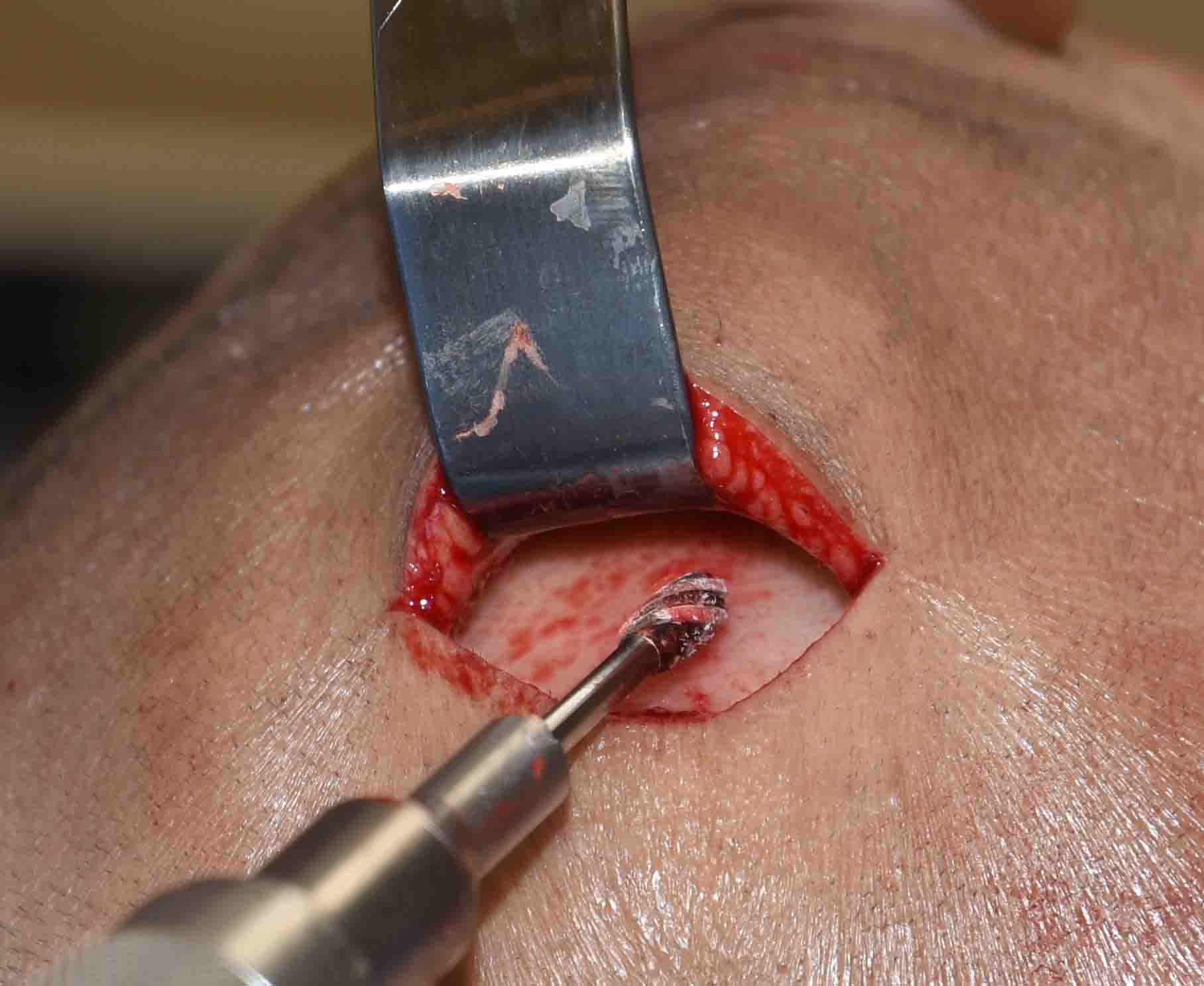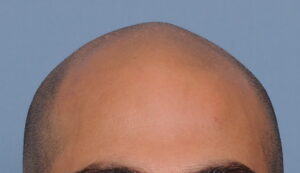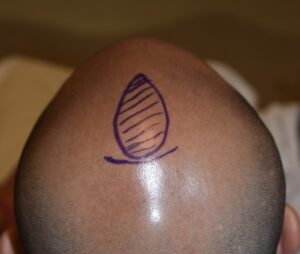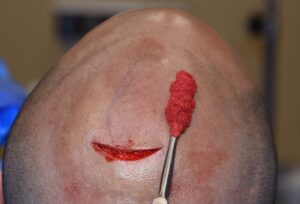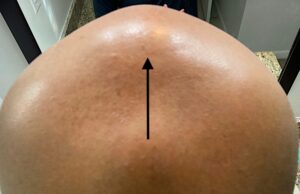Background: The shape of the head largely consists of a variety of convex curves regardless of the angle in which it is viewed. It has an oblong spherical shape in which each edge transition, as viewed from various angles, has differently shaped curves to it. Differently shaped heads will cause disruptions of these convex curves that are unaesthetic in appearance.
When viewed from the front the top of the head from side to side between the temporal lines has a curved shape. Its highest point is in the midline but that is usually only slight higher and it still has a rounder shape. When the midline of the skull has more of a peaked shape the normal curve is bent upward creating the appearance of angulated sides. (or more like a roof top) This almost always is due to a high sagittal ridge or crest.
The midline sagittal suture connects the open anterior and posterior fontanelles that are seen in infancy. Like all cranial sutures this allows skull bone growth to occur perpendicular to it. Once the fontanelles have closed the growth rates of the skull slows down and the sagittal sutures gradually fuse. When the sagittal suture fuses way too early the well known sagittal craniosynostosis condition (scaphcephaly) occurs. But there are a lot more very minor variants of sagittal ridge deformities that are only aesthetic in nature and present as small raised ridges. Probably a lot of people have them but they only became a potential aesthetic distraction in the person who has a shaved head or very closed cropped hair.

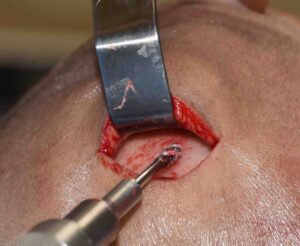
The amount of bone dust/residue removed should correlate with the length and height of the sagittal ridge reduced.
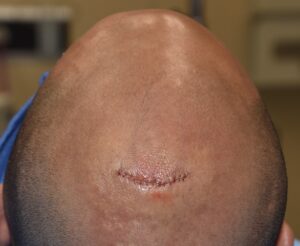
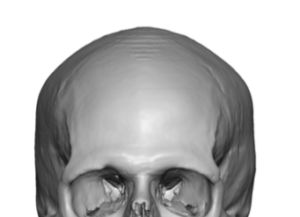
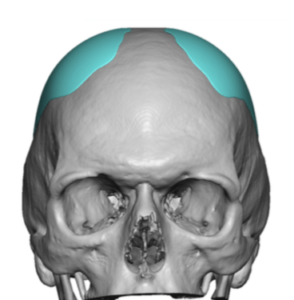
Case Highlights:
1) An elevated sagittal suture line can create a prominent midline peak in the shape of the head.
2) A sagittal ridge prominence represents a thickened area of linear bone which can be effectively and safely burred down.
3) The small scalp incision used in these limited skull reduction procedures heals in a near inconspicuous fashion.
Dr. Barry Eppley
Indianapolis, Indiana

